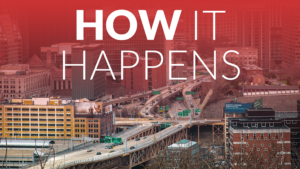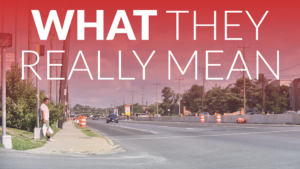Related Resources
Community Connectors Portal: Tools for advocates > What they really meanThings DOTs say: “Expanding the road will definitely reduce congestion”
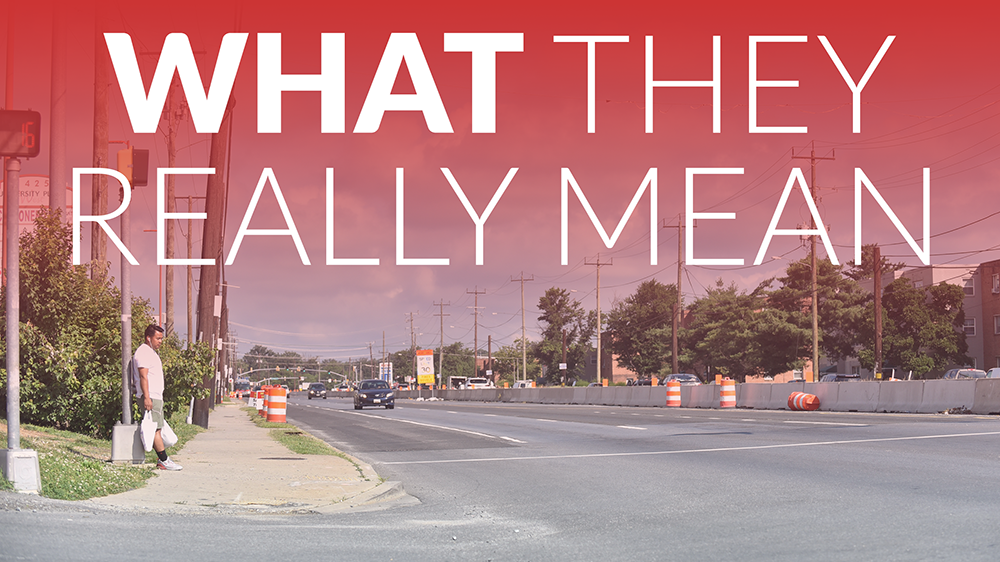
Things DOTs say: “Expanding the road will definitely reduce congestion”
There’s an immutable fact routinely ignored by DOTs: new or expanded roads produce new driving and new trips, a phenomenon known as “induced demand.” The failure to understand and account for it feeds our fruitless, decades-long attempt to eliminate congestion by spending billions to expand or build new roads. Agencies must get their heads out of the sand and account for induced demand in the planning process, and advocates can help.
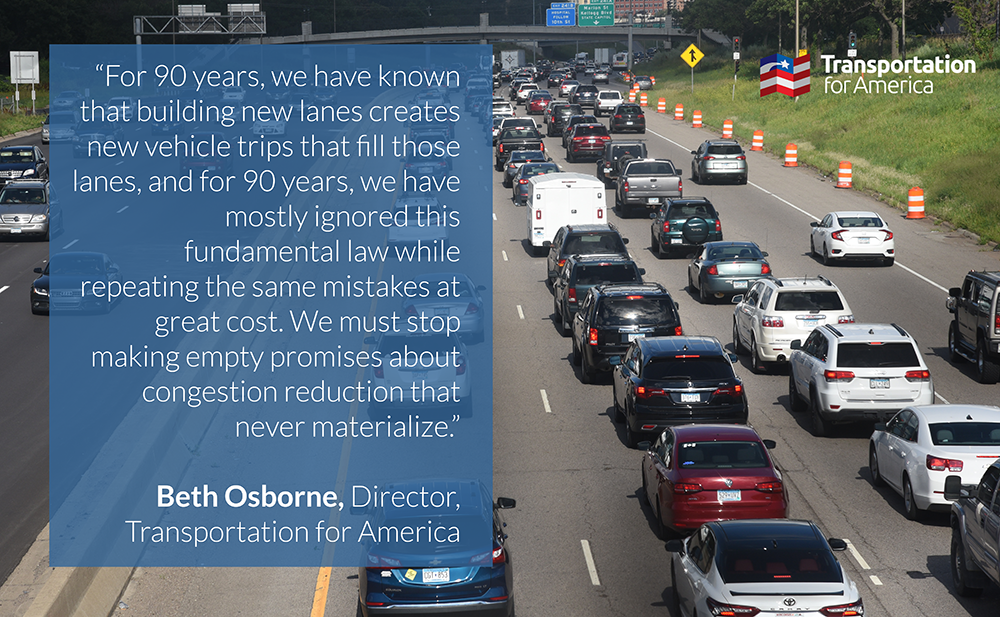
What is induced demand?
Induced demand is the transportation version of a fundamental principle of economics: giving something away for free shapes the behavior of those who want it. New road capacity provided for free results in new demand to use it that will outstrip supply. Add more lanes to a congested road and, voila, new trips materialize and the road is just as congested as it was before—or more. (We wrote about induced demand a few years ago here.) Numerous academic studies have demonstrated this concept going back to the 1930s. A recent landmark study proved that every one percent increase in highway capacity results in a one percent increase in vehicle miles traveled.
As part of our Congestion Con report, we explained this concept in a simple four-part graphic:
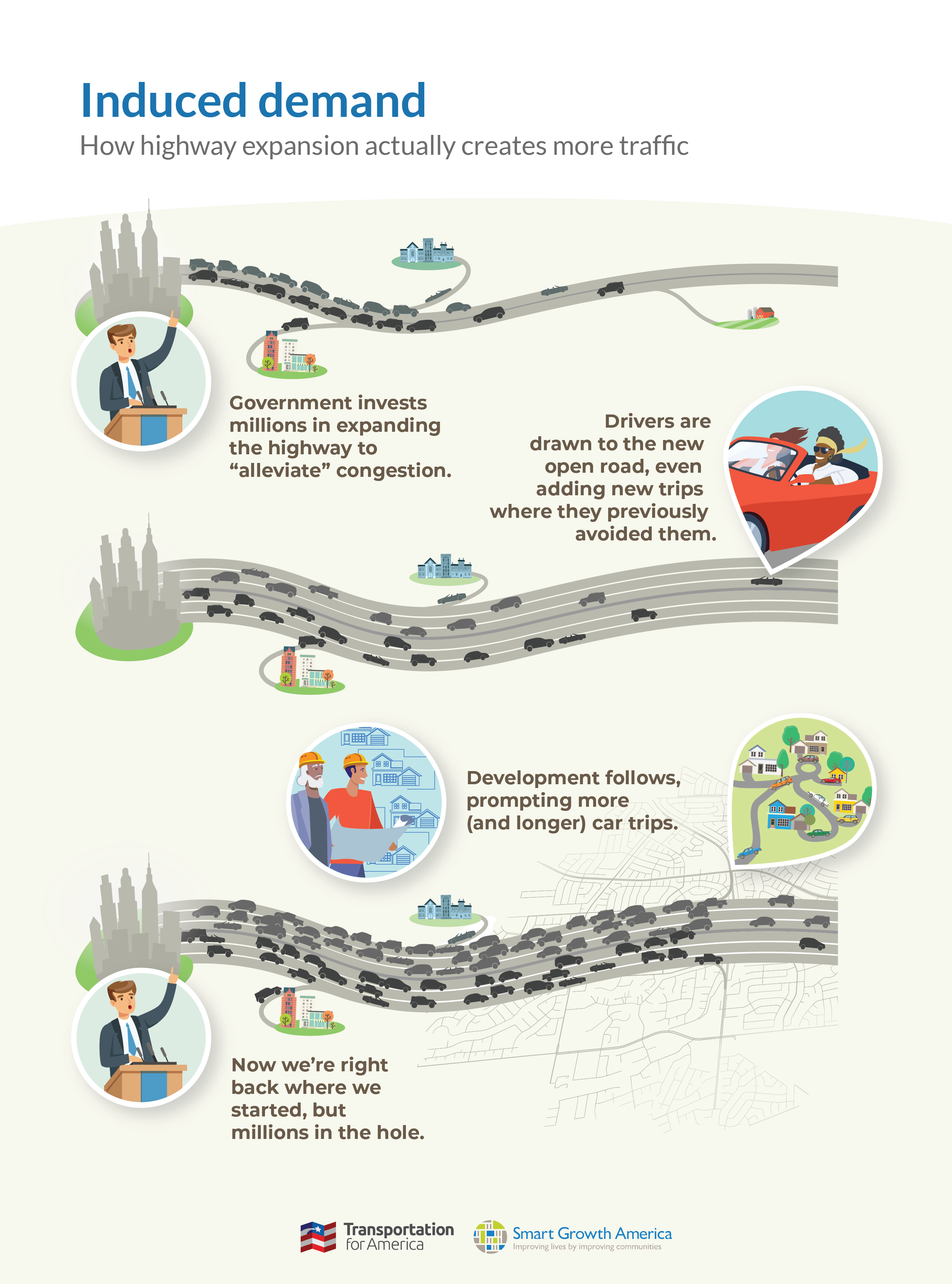
Yet political leaders and transportation agencies refuse to believe this same principle will apply when they spend billions to widen or expand highways in the name of “solving” traffic congestion in urban regions, and then give away all of that newly created space for free. USDOT provides no direction on how to measure it and barely acknowledges it as a phenomenon.
Why does this matter?
The short answer is because the guiding principle of most transportation agencies (regardless of what they claim) is “solving” or “eliminating” congestion and the accepted solution is building new roads or expanding existing ones. Regardless of what they profess, “mitigating congestion” takes precedence over repairing roads, improving safety, or increasing access to jobs and services.
How can advocates fight back?
1) Get loud about inaccurate past projections
Every project that’s been built near you for decades was justified in part because of all of the “congestion relief” that it was going to bring. But just like a weather forecast from this day last year, almost no one goes back to examine how reality matched up with the predictions. Start there! First, if you live in a large metro area, find the long-term trend in congestion and delay vs. road expansion in our report, the Congestion Con. Second, examine the projections for specific, previous road expansion projects. Read old news coverage, press releases, and project summaries to see the forecasts for traffic improvements and compare to current data. Send those comparisons to local media and make them unavoidable for the public.
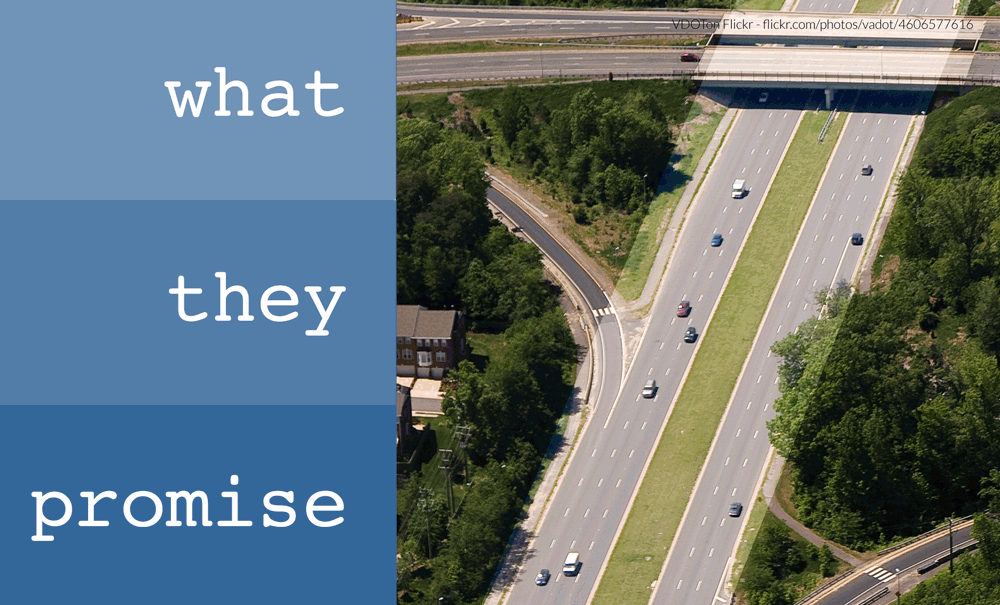
2) Calculate the induced demand (and emissions) of proposed projects near you
The incredible SHIFT calculator provides anyone with the ability to estimate the increased traffic and pollution that will result from proposed highway expansions. Produced by RMI, T4America and NRDC, anyone can use this tool to calculate the new trips that an expanded or new road will produce. Here’s a sample estimating the impacts of the I-35 widening project in Austin, TX, which would add 42 lane-miles to the interstate through downtown Austin.
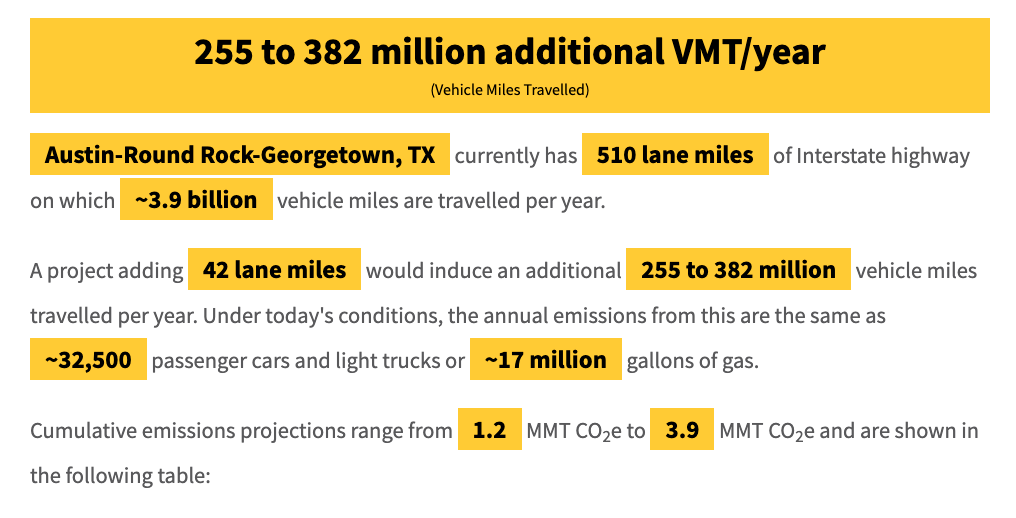
3) Ask your transportation agencies how they account for induced demand and publicize their answers to that question
Transportation agencies need to start explaining how they account (or don’t!) for induced demand when planning new projects. Their answers may be terrible, but they’ll be on the record. This terrific post from Strong Towns shows how you can get those answers and then deconstruct them publicly. Go to public forums and ask DOT representatives similar questions. Talk to your local media (or transportation reporter, if you have one) and equip them with smart questions to ask about proposed projects.
4) Remind public officials: their voters do not believe highway expansions are the best solution for reducing congestion
Our 2023 nationwide survey of American voters’ attitudes revealed a significant divide between voters’ attitudes about the best short-and long-term solutions for reducing traffic, versus the actual priorities of their state and local transportation agencies.
What should transportation agencies be doing?
The focus of the Community Connectors portal is on equipping advocates, but transportation agencies may be interested in knowing where to start. Here are three:
1) Create a system to check your modeling, identify inaccuracies, and improve your work
You don’t have to believe the models are entirely bogus to embark on a rigorous process of checking them, evaluating their accuracy by comparing past projections to reality, and striving for models that produce better results. Spend some time looking backwards.
2) Experiment with induced demand by looking at past misses and seeing if induced demand accounts for the discrepancy
As part of that process of evaluating your models and looking backward, look specifically at the projections that were far off. What could account for the discrepancies? Start with the proven conclusion that increases in capacity produce equal increases in driving, as proven in this paper, and then compare. Use the SHIFT calculator to produce an estimate of induced demand from your project and see how it compares to your own models.
3) Look at the long-term trends in highway expansions and congestion/cost
Spend some time reading our Congestion Con report to look at some of the long-term trends with regard to how much money we’ve spent on highway expansions and what’s happened to congestion as a result. What accounts for the fact that congestion has only gotten worse in the face of expansions that outpace population growth? Page 31 of the Congestion Con contains more detailed recommendations you can consider.
What else should you read and share?
Scores of other individuals and organizations have done great work to explain induced demand and why/how it gets ignored to perpetuate our broken status quo. There are a plethora of resources worth digging into. Here are some of the most helpful:
T4America reports and resources
- T4America report: Repair Priorities – Our spending priorities do not line up with the perpetual rhetoric of ‘repairing our crumbling infrastructure’ used to justify more transportation spending.
- T4America report: The Congestion Con – More lanes and more money just produce more congestion, but states and cities keep falling for it.
- T4America report: Driving Down Emissions – Our land-use and transportation decisions are inextricably connected.
- T4America post: Say hello to induced demand – Our longer narrative explainer on induced demand.
Other resources and writing
- CityLab University: Induced Demand
- VOX: The “fundamental rule” of traffic: building new roads just makes people drive more
- City Observatory: The Fundamental, Global Law of Road Congestion
- Strong Towns: Ignoring induced demand is engineering malpractice
- Strong Towns: Dealing with induced demand (Partially adapted from Chapter 6 of Chuck Marohn’s book Confessions of a Recovering Engineer, strongly recommended by T4America staff.)
Videos:
Adam Something explains induced demand in less than three minutes
VOX: How Highways Make Traffic Worse
CityNerd: 14 minutes on induced demand





